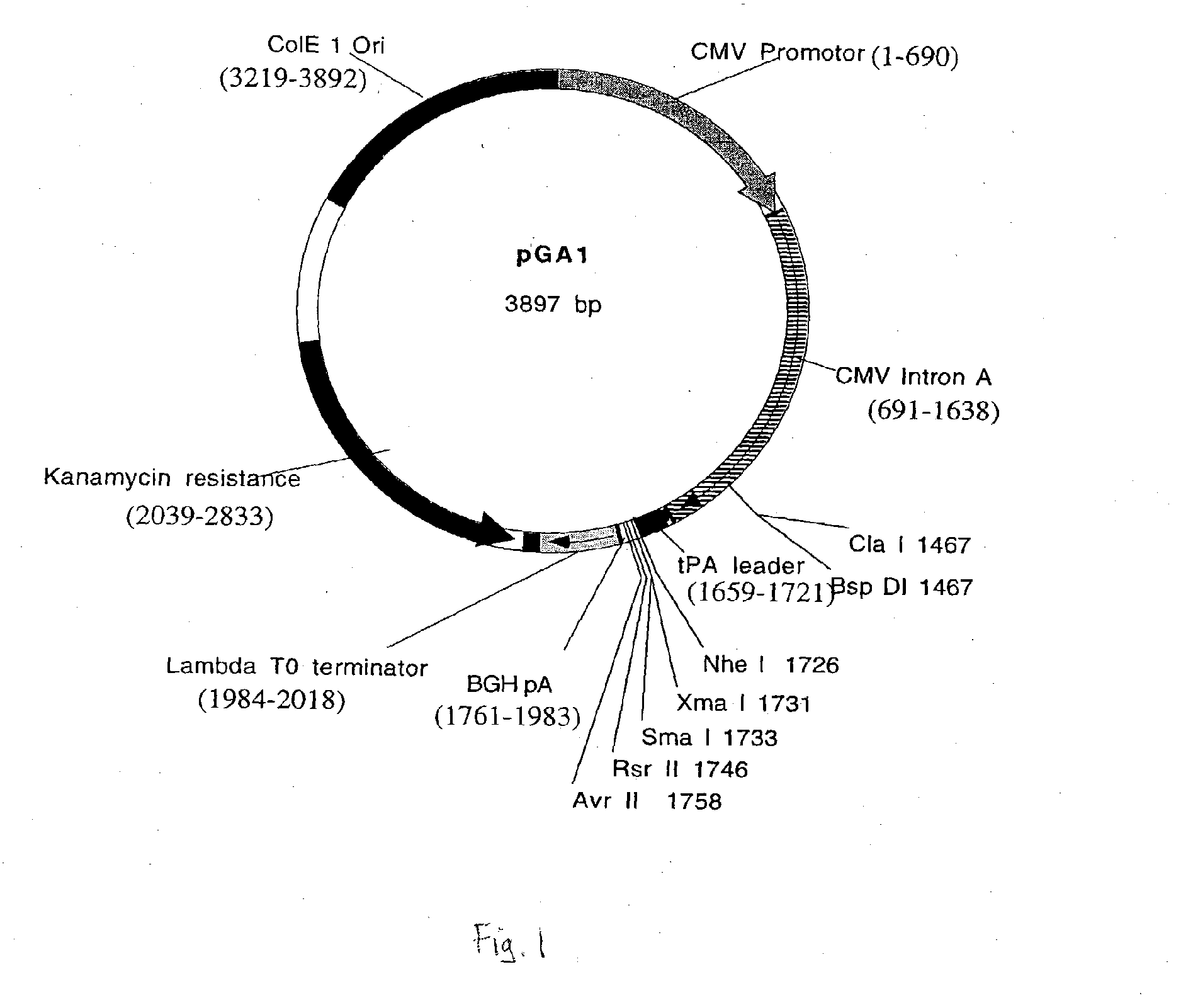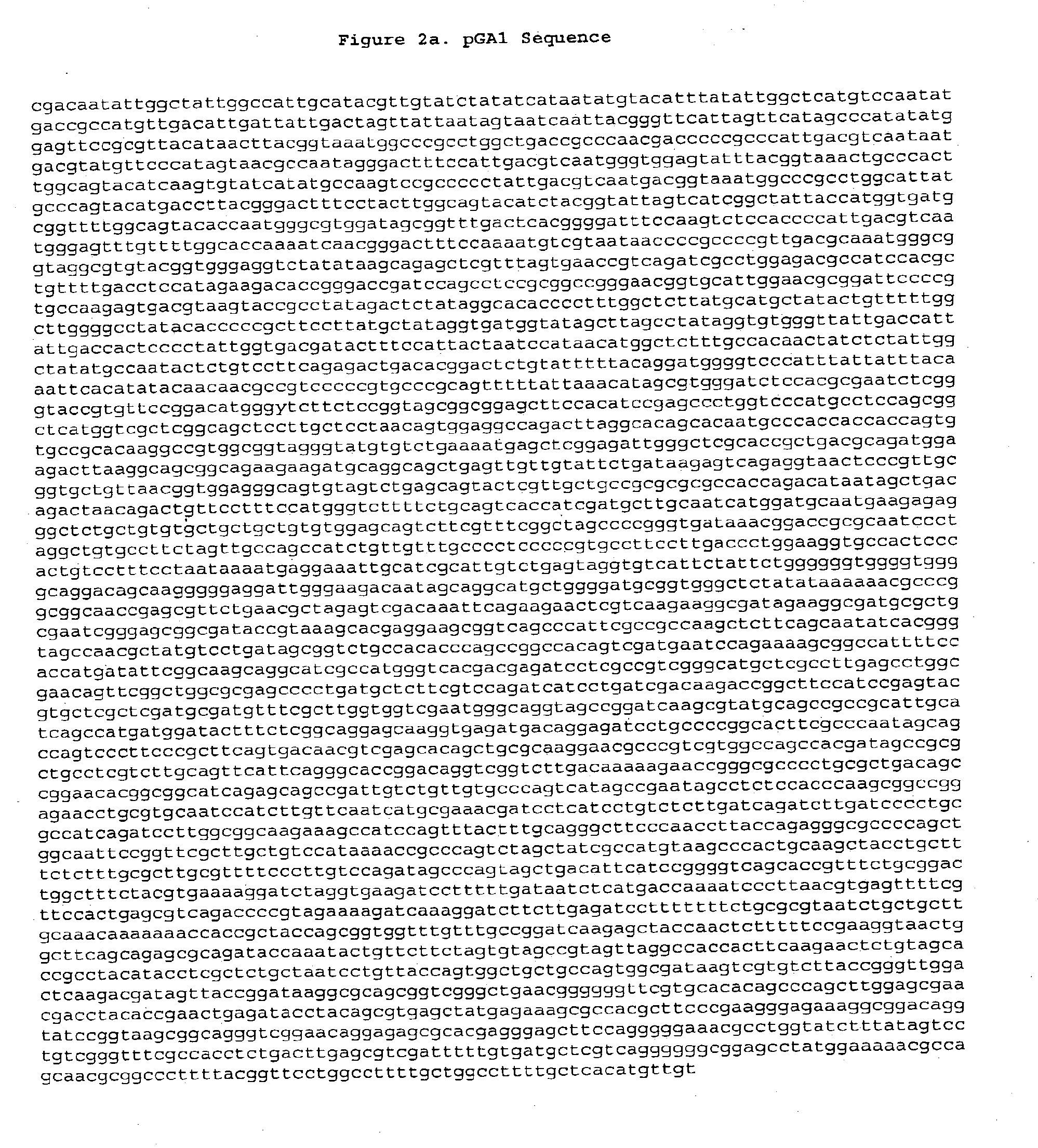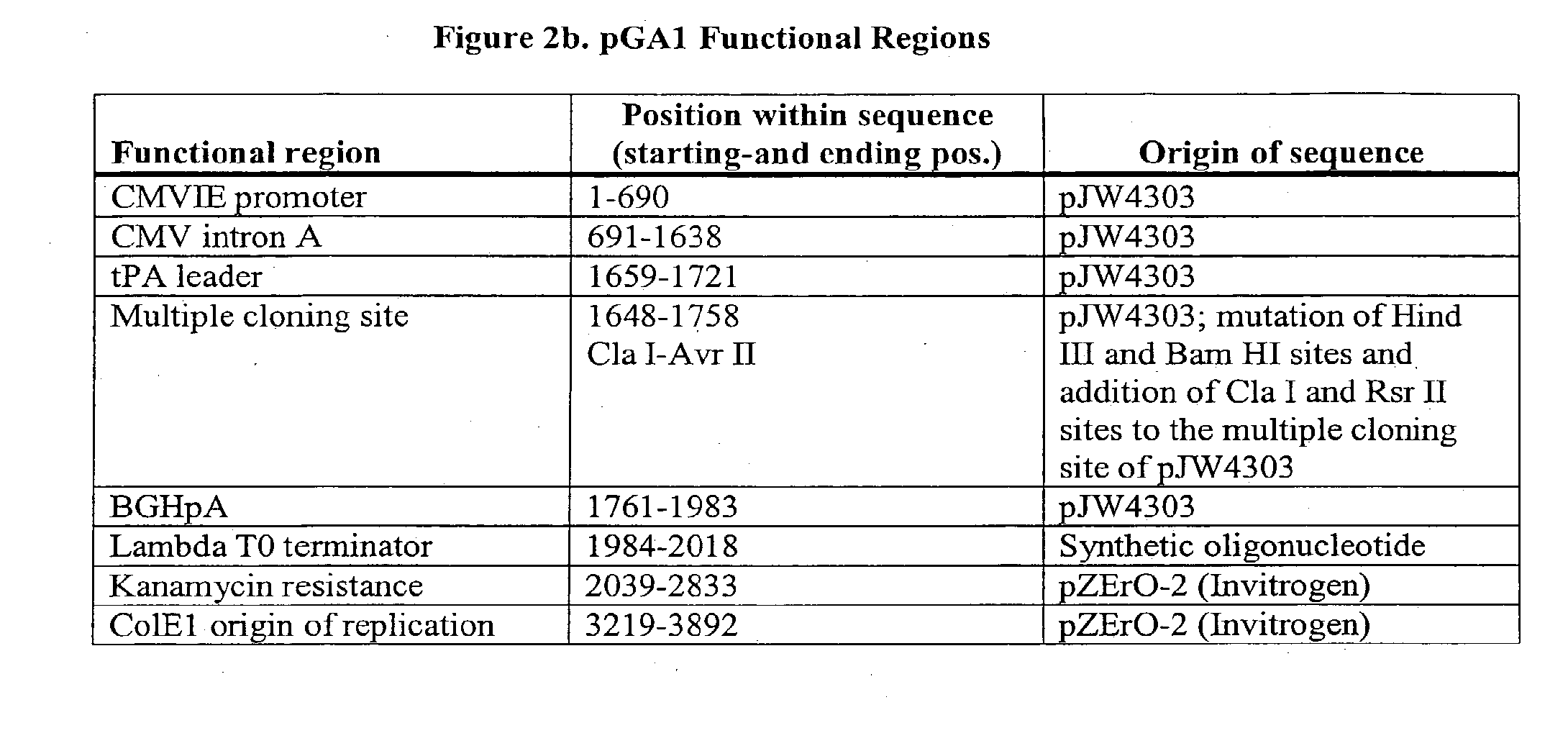Compositions and methods for generating an immune response
a technology of immune response and composition, applied in the field of molecular genetics and immunology, can solve the problems of population threat of smallpox, and achieve the effects of boosting dna-primed response, stimulating pro-inflammatory cytokines, and enhancing immune respons
- Summary
- Abstract
- Description
- Claims
- Application Information
AI Technical Summary
Benefits of technology
Problems solved by technology
Method used
Image
Examples
example 1
pGA1
[0097]pGA1 (see FIGS. 1 and 2) contains (1) the ColE1 origin of replication (a 672 bp sequence that contains the origin of replication (ori) and encodes an RNA primer and two negative regulators of replication initiation) (2) the kanamycin resistance gene (an antibiotic resistance gene for plasmid selection in bacteria), (3) the lambda T0 terminator, and (4) a eukaryotic expression cassette that includes an upstream intron (here, CMV Intron A), the CMV immediate early (CMVIE) promoter, and termination sequences from the bovine growth hormone polyadenylation sequence (BGHpA). A synthetic mimic of the leader sequence for tissue plasminogen activator (tPA) can also be included within the expression cassette. The expression cassette can include multiple restriction sites, and those sites can be included or excluded as desired to facilitate inclusion of expression cassettes that encode antigens from any HIV clade. The cloning sites in pGA1 include a Cla I site upstream of the tPA lea...
example 2
pGA1.1
[0104]pGA1.1 (SEQ ID NO: 2) is identical to pGA1 except that the multiple cloning site has been altered to include an EcoRI site. This was accomplished by site directed mutagenesis using the following primers: 5′-GCTGCTGCTGTGTGGAGAATTCTTCGTTTCGGC-3′(forward) and 5′-GCCGAAACGAAGAATTCTCCACACAGCAGCAGC-3′ (reverse) (SEQ ID NOs:17 and 18 respectively). Accordingly, the pGA1.1 vector is an embodiment of the invention; as are other vectors having one or more of the features or characteristics of a pGA plasmid (see the detailed description), but different restriction endonuclease sites in the multi-cloning site (e.g., the invention encompasses plasmids that are otherwise substantially similar to pGA1 but that have more, less, or different restriction endonuclease sites in their multi-cloning site).
example 3
pGA1.2
[0105]pGA1.2 (SEQ ID NO: 3) is identical to pGA1.1 except that the multiple cloning site has been altered to include BamHI and XhoI sites 5′ to the EcoRI site. This was accomplished by site directed mutagenesis using the primer 5′-CTGCAGTCACCATGGATCCTTGCACT-CGAGGATGCAATGAAGAG-3′ (SEQ ID NO:19) and the reverse primer 5′-CTCTTCATTGCATCCTCGAGTGCAAGGATCCATGGTGACTGCAG-3′ (SEQ ID NO:20).
PUM
| Property | Measurement | Unit |
|---|---|---|
| nucleic acid | aaaaa | aaaaa |
| length | aaaaa | aaaaa |
| stability | aaaaa | aaaaa |
Abstract
Description
Claims
Application Information
 Login to View More
Login to View More - R&D
- Intellectual Property
- Life Sciences
- Materials
- Tech Scout
- Unparalleled Data Quality
- Higher Quality Content
- 60% Fewer Hallucinations
Browse by: Latest US Patents, China's latest patents, Technical Efficacy Thesaurus, Application Domain, Technology Topic, Popular Technical Reports.
© 2025 PatSnap. All rights reserved.Legal|Privacy policy|Modern Slavery Act Transparency Statement|Sitemap|About US| Contact US: help@patsnap.com



